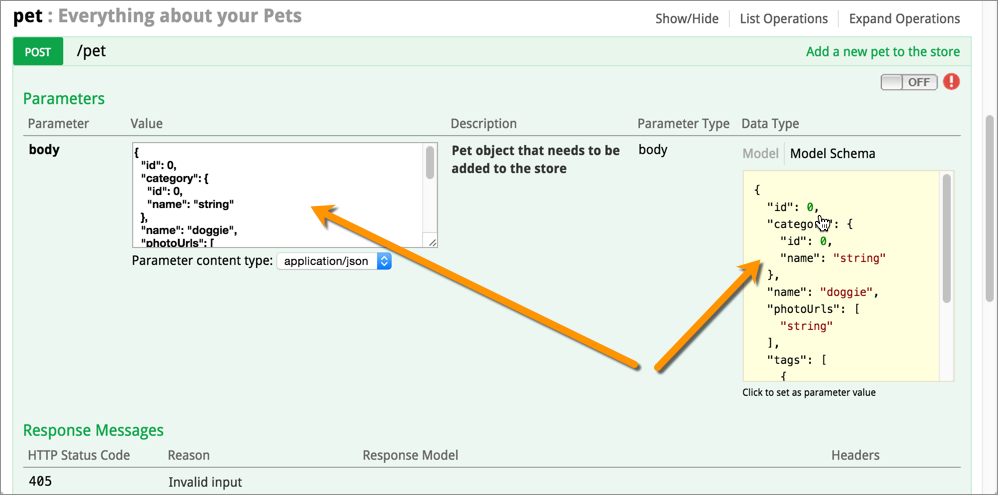

If you do not care about performance you could also use the serialization/deserialization mechanism to copy the data into a new model instance. Also remember that these models can be nested and you have to copy all the object contained in the model you received.

But continue using the created model types can be tricky because the models do not provide a copy/move constructor or an assignment operator. Here we have implicitly done it by serializing it. When handling a signal you need to create a deep copy of the data you received, if you want to keep it using it, as it will be deleted as soon as the QEventLoop continues. Note that you first have to create an instance of the model and fill it afterward with the data from the QJsonObject. Which is a bit odd when knowing Qt’s from* functions that are creating new objects. The methods to read read data from JSON are not static and will not create a new object but fill the current object with the data read from JSON.
#Swagger editor tutorial code#
Looking into the code itself will show that all models share a common interface with four helper functions to create an object with data from JSON or serialize an object as JSON.

#Swagger editor tutorial generator#
The code generator detects name clashes between models and appends a integral counter. Specifying names for many schemas can end up with conflicting names. If you don’t want that you can specify a title in the complex type and the code generator will use it as class name.

The name will be made up from the containing schema and the name of the property that holds the complex type. If a schema defines a complex property that will end up in it’s own class. In case you used an anonymous schema the name is made up from the parameter it is defined in. Each schema results in it’s own class using the name you specified for it in the title field of that schema. Models are the data classes the Generator will create for all schemas defined in your OpenAPI document. If you used one or more of those the code generator will simply drop those characters to form a valid C++ method name. You are allowed to use non-ASCII characters inside an operationId. If an operationId is missing the code generator will use the endpoints path and HTTP method to generate a method name for it. In case you have specified more than one tag in the tags list that one API endpoint will end up in several API classes. This same behavior is implemented in the Swagger code generator and you well find endpoints without tags in the OAIDefaultAPI class. It is exactly the same as if you have added the value “default” to the tags field. If you do not specify a tag the endpoint will be included in Swaggers default group. Swagger uses tags to group endpoints logically. The generator has some fallback mechanisms implemented for missing tags and operationId fields.
#Swagger editor tutorial how to#
We took a close look on the generated code and provide a small example how to integrate with a Qt Quick HMI. As writing boilerplate code can be pretty exhausting when the API has a lot to offer, we came a cross Swagger and OpenAPI Generator that creates code automatically. Qt has a built-in HTTP-client since 4.4 (~2003) which is sufficient to interact with REST/OpenAPI/Swagger APIs, but this means to write quite a bit of boilerplate by hand. When working in an IT context Swagger/OpenAPI is well established, but we also encounter such APIs at the boundary between the OT-world (machines/devices) and the IT-world – often with C++/Qt as an implementation environment. ADLs (API description languages), amongst which OpenAPI/Swagger is the most popular, have been developed to provide a more structured approach to REST, making it easier to develop, test, maintain and document APIs. REST itself is not a tightly defined standard but rather a set of principles and practices (which are, at times, interpreted differently by its users). REST is the de facto standard today when it comes to services and APIs in the IT world.


 0 kommentar(er)
0 kommentar(er)
